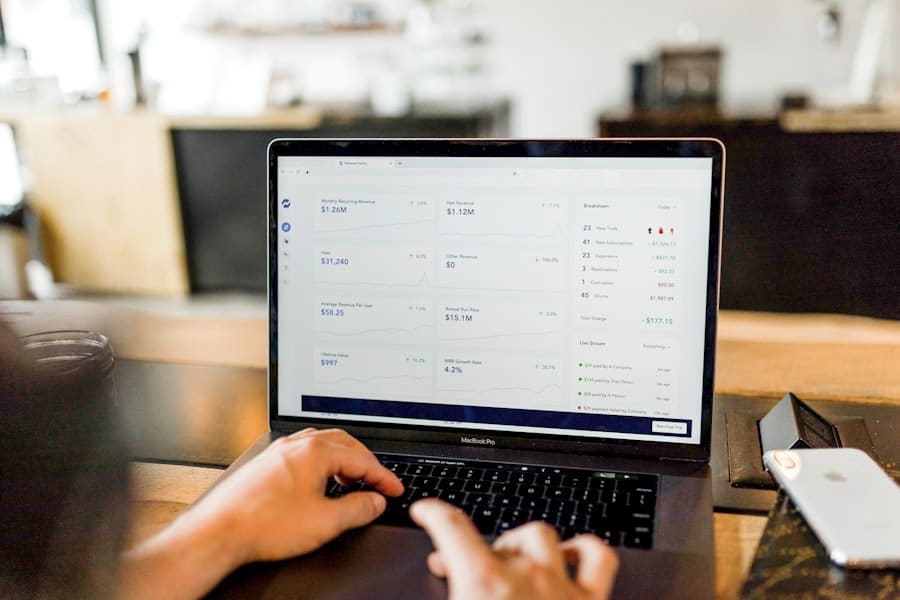Tokenization refers to the process of converting rights to an asset into a digital token on a blockchain. This transformation allows physical assets, such as real estate, art, or commodities, to be represented in a digital format that can be easily traded, transferred, or managed. The essence of tokenization lies in its ability to break down the ownership of an asset into smaller, more manageable units, often referred to as tokens.
Each token represents a fraction of the underlying asset, enabling a broader range of investors to participate in markets that were previously inaccessible due to high entry costs. The concept of tokenization is not merely a technological innovation; it is a paradigm shift in how we perceive ownership and investment. Traditionally, investing in physical assets required significant capital and often involved complex legal frameworks.
Tokenization simplifies this process by leveraging smart contracts—self-executing contracts with the terms of the agreement directly written into code. This automation reduces the need for intermediaries, streamlining transactions and enhancing transparency. As a result, tokenization has the potential to revolutionize various industries by making asset ownership more fluid and accessible.
Key Takeaways
- Tokenization of physical assets involves converting real-world assets into digital tokens on a blockchain, making them easier to trade and invest in.
- The benefits of tokenizing physical assets include increased liquidity, fractional ownership, and access to a wider investor base.
- Tokenization is democratizing investment opportunities by allowing smaller investors to access traditionally exclusive assets and diversify their portfolios.
- Blockchain technology plays a crucial role in tokenization by providing transparency, security, and efficiency in asset trading and ownership.
- Examples of tokenized physical assets include real estate, art, commodities, and even rare collectibles, all of which can be easily traded and invested in through digital tokens.
The Benefits of Tokenizing Physical Assets
Liquidity and Fractional Ownership
In traditional markets, selling physical assets can be a lengthy and complicated process, often involving extensive legal procedures and negotiations. Tokenization, on the other hand, allows for fractional ownership, enabling investors to buy and sell portions of an asset rather than the entire entity. This fractionalization increases liquidity, as tokens can be traded on various platforms, facilitating quicker transactions and a more dynamic market environment.
Transparency and Security
Tokenization also enhances transparency and security. Each transaction involving a token is recorded on a blockchain, creating an immutable ledger that can be audited at any time. This transparency reduces the risk of fraud and provides investors with a clear view of asset ownership and transaction history.
Secure Ownership Transfer and Trust
The use of blockchain technology ensures that ownership rights are securely transferred without the need for intermediaries, minimizing the potential for disputes and enhancing trust among participants in the market.
How Tokenization is Democratizing Investment Opportunities
Tokenization is fundamentally democratizing investment opportunities by lowering barriers to entry for a diverse range of investors. Traditionally, high-value assets like real estate or fine art were accessible only to wealthy individuals or institutional investors. However, with tokenization, these assets can be divided into smaller units, allowing everyday investors to participate in markets that were once out of reach.
This shift not only broadens the investor base but also fosters greater financial inclusion. For instance, consider a luxury apartment building valued at $10 million. Through tokenization, this property can be divided into 10,000 tokens, each representing a $1,000 stake in the asset.
An investor with only $1,000 can now own a fraction of this high-value property, gaining exposure to real estate investment without needing substantial capital. This democratization extends beyond real estate; it applies to various asset classes, including collectibles and commodities, enabling a wider audience to engage in investment opportunities that were previously limited to affluent individuals.
The Role of Blockchain Technology in Tokenization
Blockchain technology serves as the backbone of tokenization, providing the infrastructure necessary for secure and efficient transactions. At its core, blockchain is a decentralized ledger that records all transactions across a network of computers. This decentralization eliminates the need for a central authority or intermediary, reducing costs and increasing efficiency in asset management and transfer.
For example, when an investor purchases a token representing a share in a physical asset, a smart contract can automatically execute the transfer of ownership and update the blockchain ledger without delay. This automation not only speeds up transactions but also minimizes errors associated with manual processes.
Furthermore, blockchain’s inherent security features—such as cryptographic hashing—ensure that data remains tamper-proof and transparent, fostering trust among participants in the tokenized market.
Examples of Tokenized Physical Assets
Numerous examples illustrate the practical application of tokenization across various sectors. One notable instance is real estate tokenization, where properties are divided into digital shares that can be traded on blockchain platforms. For example, platforms like RealT allow investors to purchase fractional ownership in rental properties through tokens.
This model not only provides liquidity but also enables investors to earn rental income proportional to their ownership stake. Art is another sector experiencing the benefits of tokenization. Companies like Myco allow artists to tokenize their works, enabling fractional ownership and making art investment accessible to a broader audience.
This approach not only democratizes art investment but also provides artists with new revenue streams while maintaining control over their creations.
The Potential Risks and Challenges of Tokenization
Despite its numerous advantages, tokenization is not without risks and challenges. One significant concern is regulatory uncertainty. As tokenized assets often blur the lines between traditional securities and digital assets, navigating the regulatory landscape can be complex.
Different jurisdictions may have varying rules regarding the issuance and trading of tokens, leading to potential legal complications for issuers and investors alike. Additionally, there are concerns related to security and technology risks. While blockchain technology is generally considered secure, vulnerabilities can still exist within smart contracts or the platforms facilitating token trading.
Hacks or exploits could lead to significant financial losses for investors if proper security measures are not implemented. Furthermore, the volatility associated with digital assets can pose risks for investors who may not fully understand the market dynamics at play.
The Future of Tokenization in Investment Opportunities
The future of tokenization appears promising as more industries recognize its potential to transform traditional investment models. As technology continues to evolve and regulatory frameworks become clearer, we can expect an increase in the adoption of tokenized assets across various sectors. Financial institutions are beginning to explore how tokenization can enhance their offerings, from creating new investment products to improving operational efficiencies.
Moreover, as public awareness grows regarding the benefits of tokenization—such as increased liquidity and accessibility—more investors may seek out these opportunities. The rise of decentralized finance (DeFi) platforms further complements this trend by providing innovative ways for individuals to engage with tokenized assets without relying on traditional financial intermediaries. As these developments unfold, we may witness a significant shift in how individuals approach investing and asset management.
How to Get Involved in Tokenized Physical Asset Investments
For those interested in exploring tokenized physical asset investments, several steps can facilitate entry into this emerging market. First and foremost, it is essential to conduct thorough research on available platforms that offer tokenized assets. Many platforms specialize in specific asset classes—such as real estate or art—so identifying one that aligns with your investment interests is crucial.
Once you have selected a platform, creating an account typically involves completing Know Your Customer (KYC) verification processes to comply with regulatory requirements. After verification, you can fund your account using fiat currency or cryptocurrencies, depending on the platform’s offerings. From there, you can browse available tokenized assets and make informed investment decisions based on your risk tolerance and financial goals.
Engaging with communities focused on tokenized investments can also provide valuable insights and networking opportunities. Online forums, social media groups, and industry events often feature discussions about trends and best practices within the space. By staying informed and connected with others interested in tokenization, you can enhance your understanding of this evolving landscape and make more informed investment choices as opportunities arise.
If you are interested in learning more about the latest technology trends, you may want to check out the article Smartwatches Xiaomi Review. This article provides an in-depth review of smartwatches from Xiaomi, a popular technology brand known for its innovative products. Just like the tokenization of physical assets is revolutionizing investment opportunities, Xiaomi’s smartwatches are changing the way we interact with technology on a daily basis.
FAQs
What is tokenization of physical assets?
Tokenization of physical assets is the process of converting rights to an asset into a digital token on a blockchain. This allows investors to buy and sell fractions of the asset, making it easier to invest in traditionally illiquid assets such as real estate, art, or commodities.
How does tokenization democratize investment opportunities?
Tokenization democratizes investment opportunities by allowing a wider range of investors to access traditionally exclusive assets. It lowers the barrier to entry, as investors can buy and sell fractions of an asset, rather than needing to purchase the entire asset outright.
What are the benefits of tokenizing physical assets?
Tokenizing physical assets offers benefits such as increased liquidity, fractional ownership, reduced transaction costs, and access to a wider pool of potential investors. It also provides transparency and security through the use of blockchain technology.
What are some examples of tokenized physical assets?
Examples of tokenized physical assets include real estate properties, fine art, precious metals, and even collectible items such as vintage cars. These assets are tokenized to allow investors to buy and sell fractions of the asset, providing access to investment opportunities that were previously out of reach for many.



